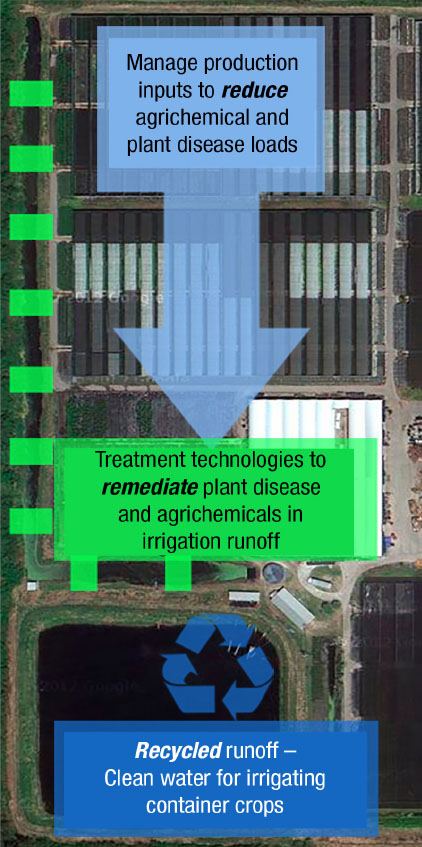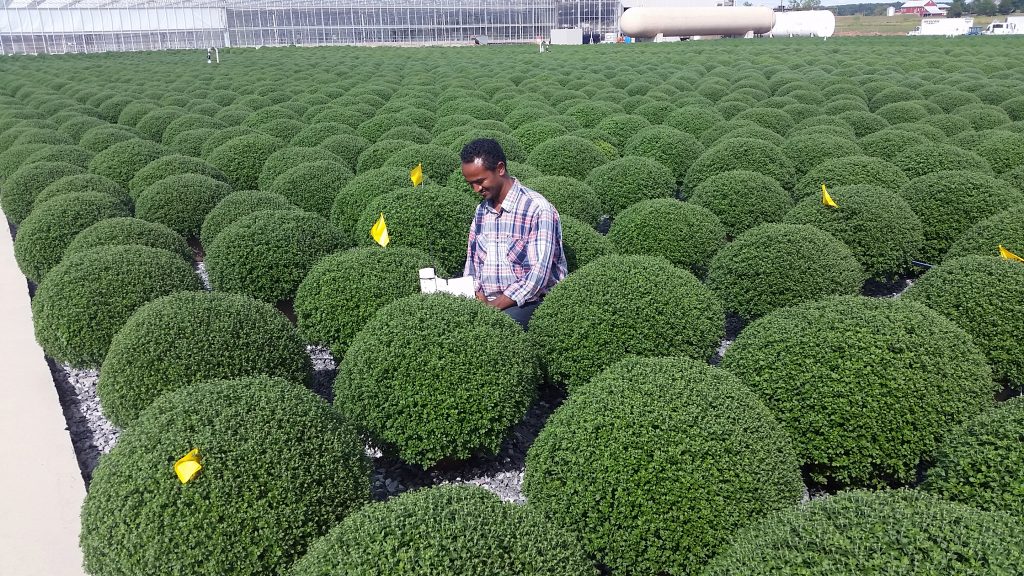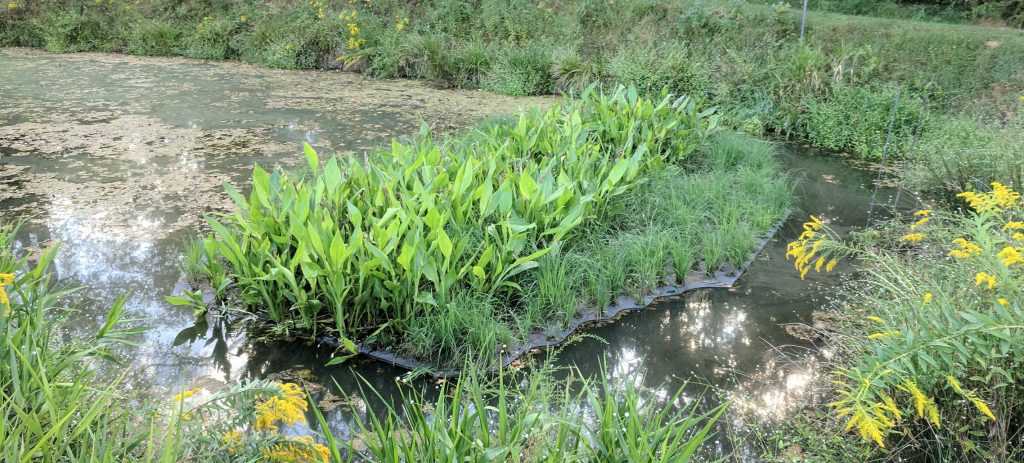By Sarah A. White
Water is necessary for growing plants. This simple statement says it all but doesn’t begin to address the complexities of water decisions growers face today. Some questions are common, regardless of where your operation is located:
- How much water do my plants need?
- How does water quality affect plant growth?
- How much water do I need to store?
- How do I need to treat my water?
- How can I be more efficient (water-wise)?
- Should I recycle my water?

The answers to these questions differ by operation and location. There is no “one-size-fits-all” approach to answering them, yet there are ideas and principles that we can take from one operation to adapt for use at another.
Fresh water resources are valuable and finite across the United States. Access to high-quality water for irrigation is becoming more competitive, as urban and industrial demands increase and societal perceptions of agricultural water use become more negative. Since operational (business) security relies on consistent water availability, growers need to develop backup sources of water (e.g., recycled water).
Reluctance to use recycled water is motivated by concerns about the presence of plant diseases, pesticides, herbicides and salts in irrigation runoff. This reluctance has been reinforced by the lack of readily available information about whether (or not) these contaminants pose a problem and how they are mitigated in an economically feasible manner.
CLEAN WateR3 OBJECTIVES
The need for answers to these questions led to formation of the Clean WateR3 (R3 = Reduce, Remediate, Recycle) Team. A team of 21 researchers from 10 institutions, 11 collaborating growers and nine advisory board members completed research on a grant from the National Institute of Food and Agriculture, U.S. Department of Agriculture, Specialty Crop Research Initiative (#2014-51181-22372).
The Clean WateR3 team worked collaboratively to:
1) Release decision-support tools helping growers identify and implement technologies to recycle water for reuse on the farm
2) Reduce contaminant loading into recycled water sources
3) Identify, customize and help integrate treatment technologies to effectively remediate plant disease, pesticide and nutrient contaminants
4) Communicate project results to growers and encourage adoption of defined practices to reduce, remediate and recycle production runoff (Figure 1)
ONLINE TOOLS
Do you want a single location to store water quality, pH and EC data from crop monitoring? GroZone tracker can help with that. WaterQual can also help you understand results from your water-quality analyses. You can access these tools and more at the cleanwater3.org website.
REDUCING CONTAMINANT LOADS
How do irrigation practices (overhead, drip) influence nutrient leaching, pesticide fate and plant disease presence in irrigation runoff? Answering this question at your operation can help you implement practices that will help you save money and time, while reducing environmental impacts. Water-conserving irrigation methods, such as micro-irrigation or sensors (Figure 2) to apply the right amount of water at the right time, can reduce the volume of irrigation applied by 47 to 77 percent. These methods can also reduce irrigation-generated runoff and pesticides escaping from production areas — without sacrificing crop quality.

Figure 2. Mums are grown using irrigation controlled by soil-moisture sensors.
Savings in the cost of water alone range from $234/acre to $4,131/acre, depending upon the cost of water and which water conservation technology is applied. If water-conserving irrigation methods were adopted by all growers who irrigate crops, savings could range from $122 million to $2.17 billion per year for U.S. growers, depending upon regionally specific costs of water.
REMEDIATING RUNOFF
Which treatment technologies will help mitigate plant diseases? Which will help remove pesticides? Which will help limit offsite nutrient release? Many technologies have been assessed for other applications (including row crop agriculture, construction sites and wastewater treatment), so we assessed physical and bio-based treatment technologies and quantified contaminant removal efficacy for specialty crop producers.
Floating wetlands (Figure 3) can help remove both nitrogen and phosphorus from runoff water. This may be especially helpful in situations where aquatic weeds and algae cause problems with pump intakes. Collaborating growers have installed floating wetlands to manage nutrient contaminants.

RECYCLING RUNOFF
The economic incentive of recycling water was quantified at a California plant nursery. The cost of installing water capture and recycling infrastructure was compared to the cost of untreated municipal water over multiple years. In 2016, recycling water saved the operation $480,000. A similar or increased return on investment is anticipated for future years.
The Clean WateR3 project developed many informational newsletters and research updates. Access all of them by using the research and newsletter tabs at cleanwater3.org.
Sarah A. White is a professor in the Department of Plant and Environmental Sciences at Clemson University, in Clemson, South Carolina.









